A raised deck is a great place to hang out outside, have guests over, and enjoy the view. A gazebo on a raised deck can make it look and work even better.
But there are a few things to consider before putting a gazebo on a raised deck.
In this article, we will discuss whether you can put a gazebo on a raised deck, what factors affect its placement, how to set it up, what to think about before buying a gazebo, and how to take care of it.
Whether you’re building a raised deck or want to add a gazebo to the one you already have, this article will help you make good decisions.
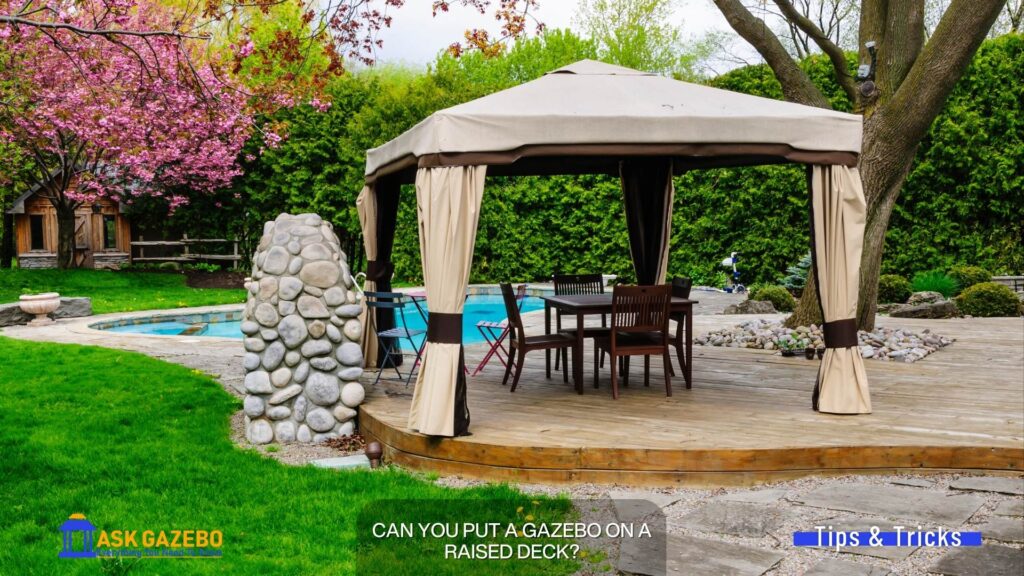

Can a gazebo be built on a raised deck?
A gazebo can indeed be constructed on a raised deck. But, it would be best if you consider important factors like:
- Ensure the deck is sturdy enough to sustain the gazebo’s weight.
- The deck and the gazebo are securely fastened to avoid movement or collapse.
- You need to look at the local building codes and rules to ensure that the gazebo’s installation meets the safety and building codes.
- Think about the weather where you live and choose a gazebo that can handle wind, rain, and snow.
- Make sure the gazebo is easy to get to from the raised deck and that there is enough room to move around.
You can ensure that your gazebo on a raised deck is stable and lasts for a long time by considering the load-bearing capacity, local building codes, weather conditions, accessibility, and other factors.
Best Gazebo For Raised Decks:
A raised deck’s gazebo should be durable, have high-quality weather resistance materials, proper ventilation, a great material style, and a perfect size for your deck.
When considering a new gazebo for your deck, also consider the ease of installation and whether you need a professional gazebo builder.
It is because the stability of the gazebo matters a lot. If you are installing it yourself or any professional, make sure it is stable and sturdy.
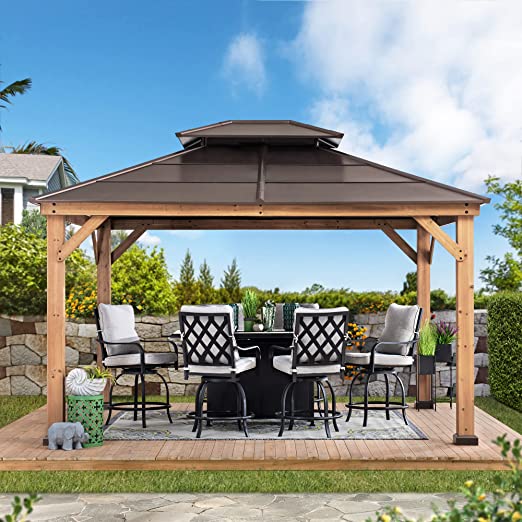

Considering the above points, we recommend Sunjoy Hardtop Gazebo. Its high-quality, weather-resistant cedar wood is just made to get fit on a raised deck with great stability. The sturdy frame and strong roof ensure that it stays in place, even in windy conditions.
View On
Where will the gazebo get fit on the raised deck?
If you have a large raised deck, you must pick up a sweet spot to put a gazebo over it. It will increase the overall usability of your gazebo.
Consider these points to pick up the right spot:
- Think about where the sun is coming from and put the gazebo where it will get the most shade and protection.
- Choose a spot for the gazebo where you can get the best view of the surrounding landscape.
- If you want your gazebo to be private, choose a spot that walls or plants surround.
- Consider the direction of the wind and choose a spot for the gazebo that is out of the way of strong winds.
- Remember to leave some space around to move around.
Challenges of Putting a Gazebo on a Raised Deck:
Installing a gazebo over a raised deck is more complex than it looks alike. Here are a few challenges you might face:
Cost: Putting a gazebo on a raised deck can be pricey, especially if it needs to be done by a professional. Before buying a gazebo for their raised deck, homeowners should think carefully about their budget and consider all options.
Cleaning and Repairs: A gazebo on a raised deck needs to be cleaned and maintained regularly to keep it working and looking nice. It includes cleaning the roof, tightening screws and bolts, and painting or staining the deck and gazebo.
Designing Problems: The gazebo’s style and materials may not match the deck. Before putting up your deck and gazebo, you should carefully consider how they look and ensure they will go well together.
Complex Construction: Putting a gazebo on a raised deck isn’t easy.
Before making this investment, you should carefully think about how much it will cost to install, how often it will need to be cleaned, and whether or not the design of the deck will match up.
But with careful planning and thought, a gazebo on a raised deck can be a beautiful and useful place to spend time outside for years to come.


Subscribe For More Gazebo Videos!
Ask Gazebo
Instructions for putting up a gazebo on a raised deck:
For a gazebo to be stable and last for a long time, you must set it up on a raised deck after careful planning and preparation.
Here are the steps you need to take to put a gazebo on a raised deck.
Planning and getting ready:
- Find out how much weight the raised deck can hold.
- Check the rules and codes for building in your area.
- Choose the right spot for the gazebo.
- Choose a gazebo with the right size and style for the raised deck.
- Plan the installation process in detail, including what materials, tools, and equipment you will need.
Materials required:
- Gazebo kit
- Deck fasteners
- Anchors in concrete
- Lag bolts and wood beams
- Deck boards
- Level
Tools you need:
- Schrauben
- Hammer & Drill
- Measuring tape
- Level Chalk line
- Circular saw
Measures for safety:
- Put on safety gear like gloves, goggles, and a hard hat.
- Before putting up the gazebo, make sure the raised deck is stable and safe.
- Be careful when using tools and equipment to avoid getting hurt or hurting someone else.
Process of installation:
- Clean the raised deck and get rid of any trash to get it ready.
- Follow the instructions that came with the gazebo to put it together.
- Put the gazebo on the raised deck and secure it with the deck using screws and concrete anchors.
- Using lag bolts, attach the wood beams to the raised deck.
- Install deck boards around the gazebo to connect it to the raised deck smoothly.
- Check the gazebo’s level and make any changes that are needed.
Following these steps ensures the installation goes well and has a beautiful, functional outdoor living space for many years.
Gazebo Designs For Raised Decks:
Here are a few design ideas for your next raised deck gazebo.
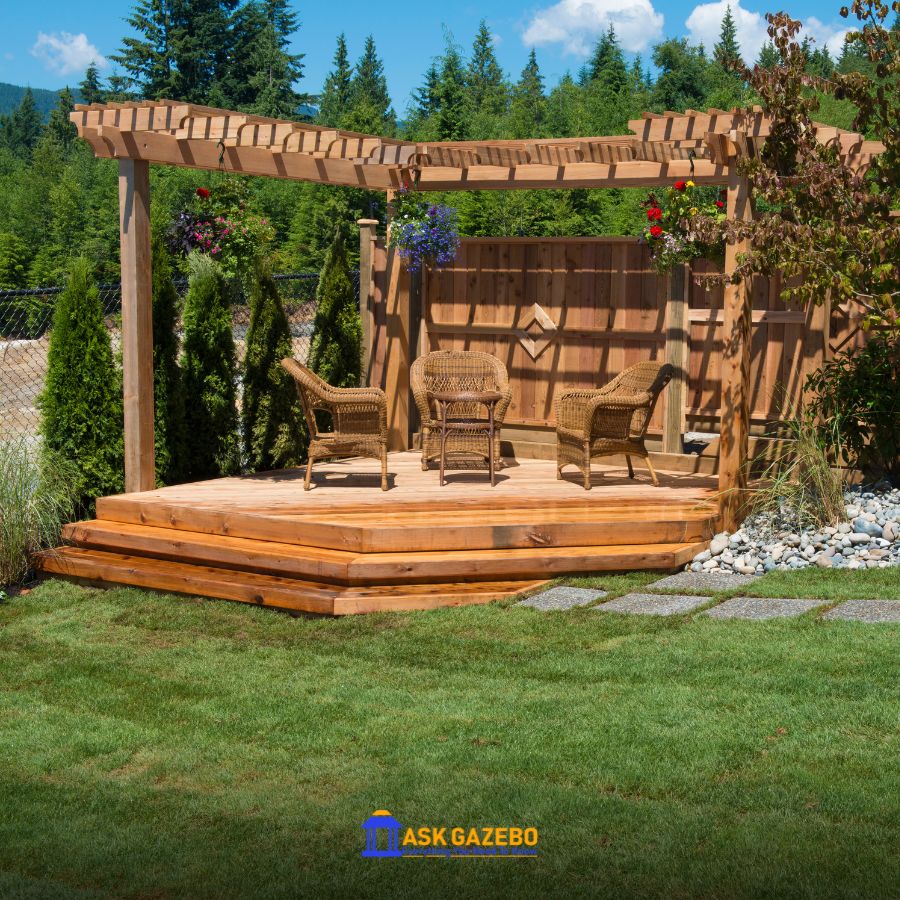

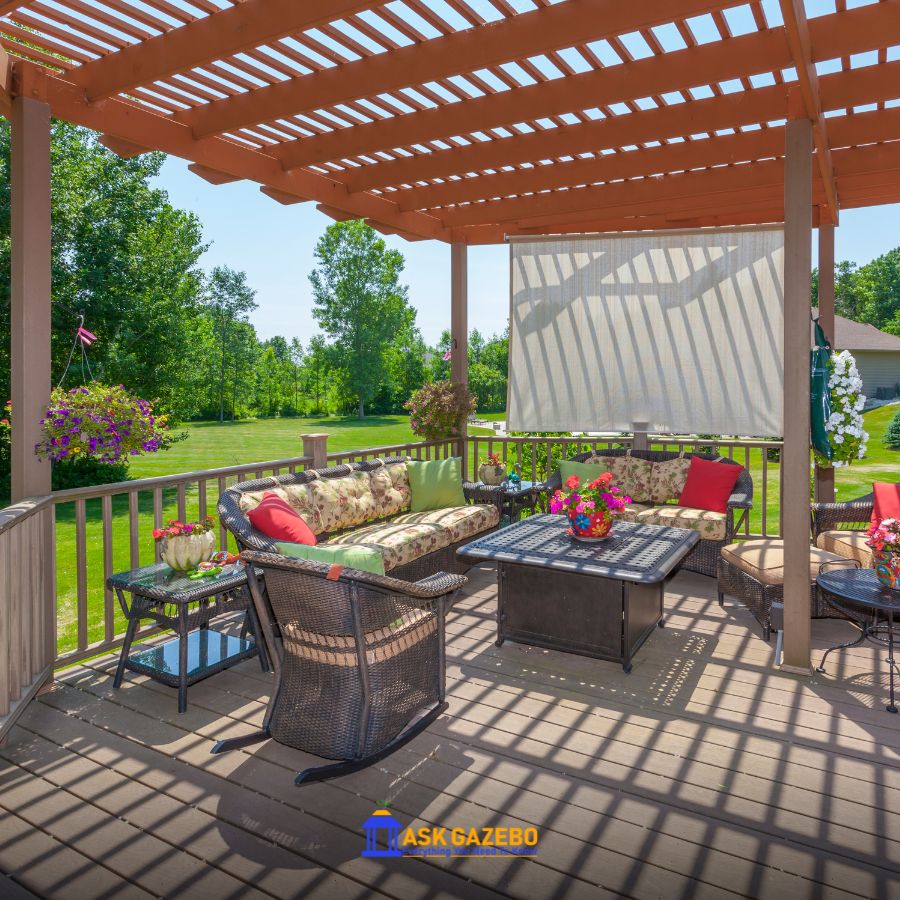

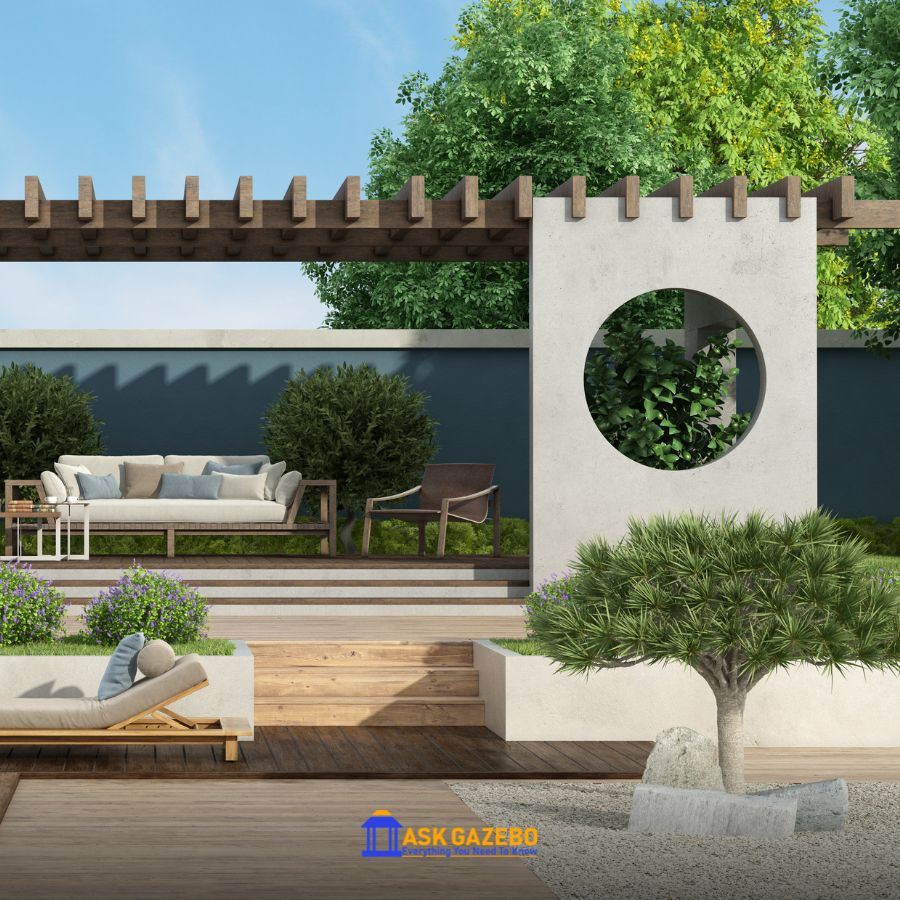

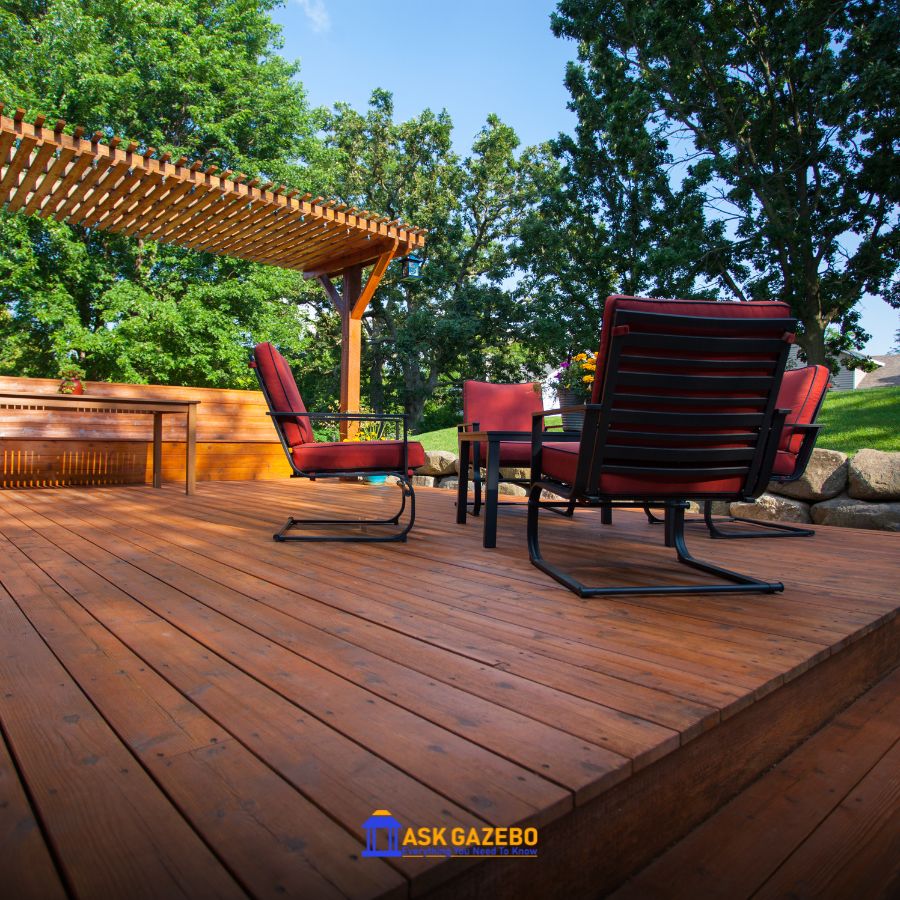

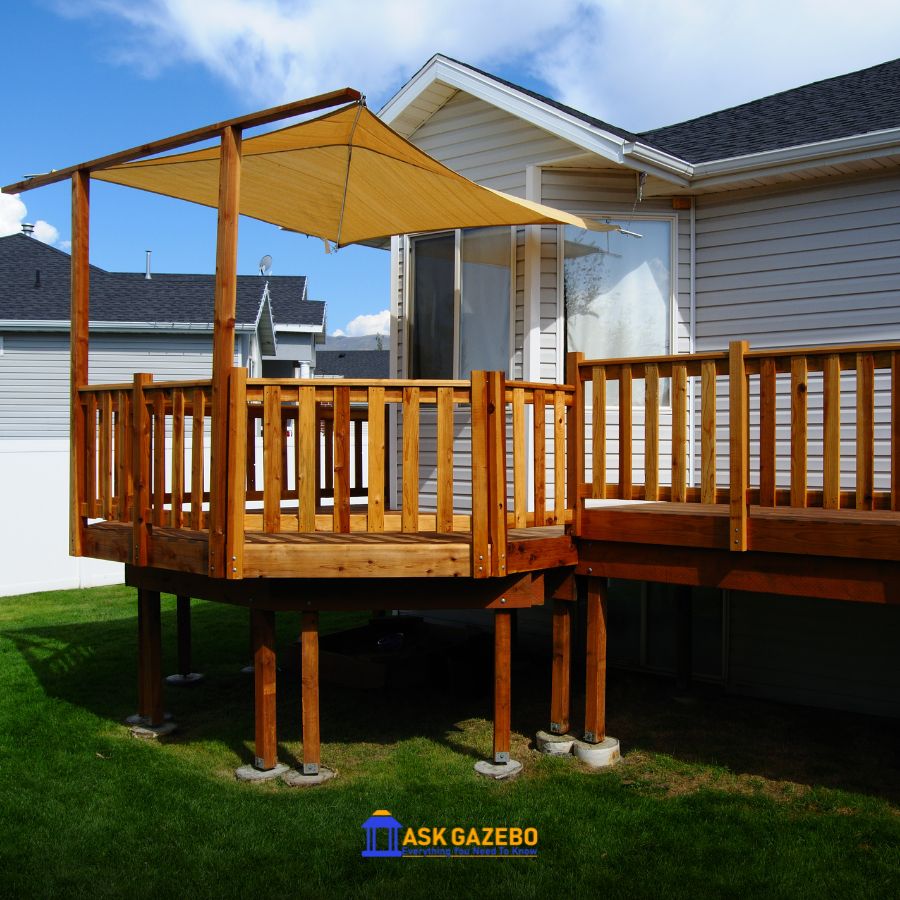

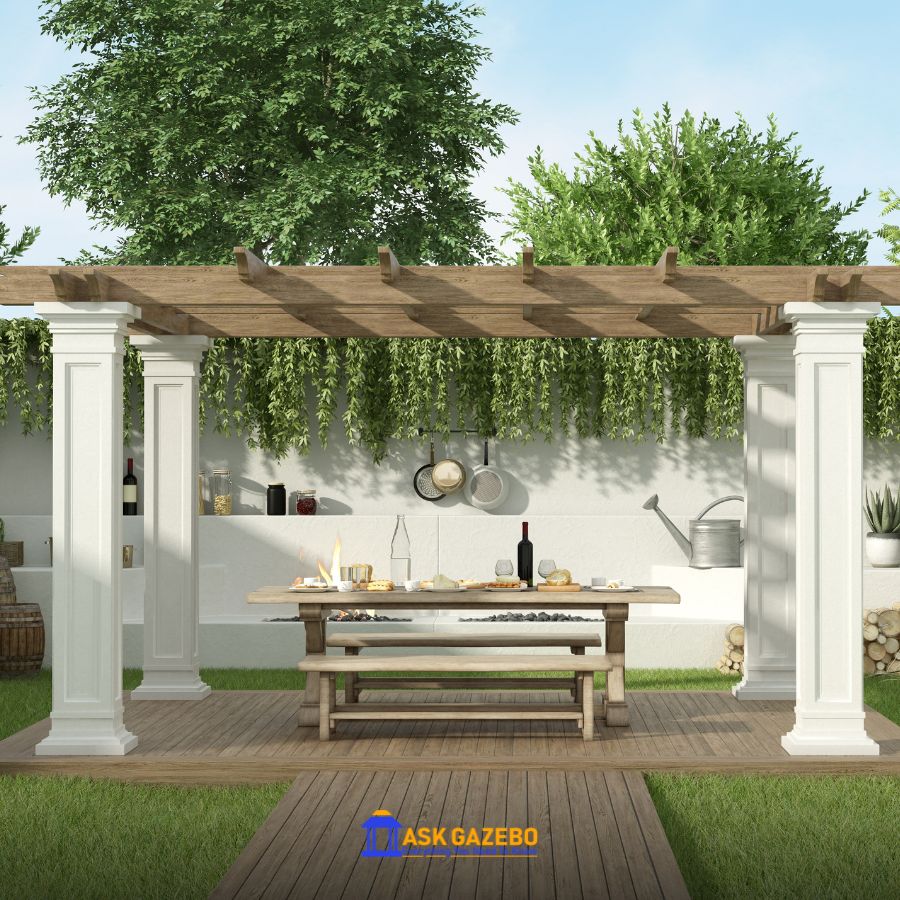

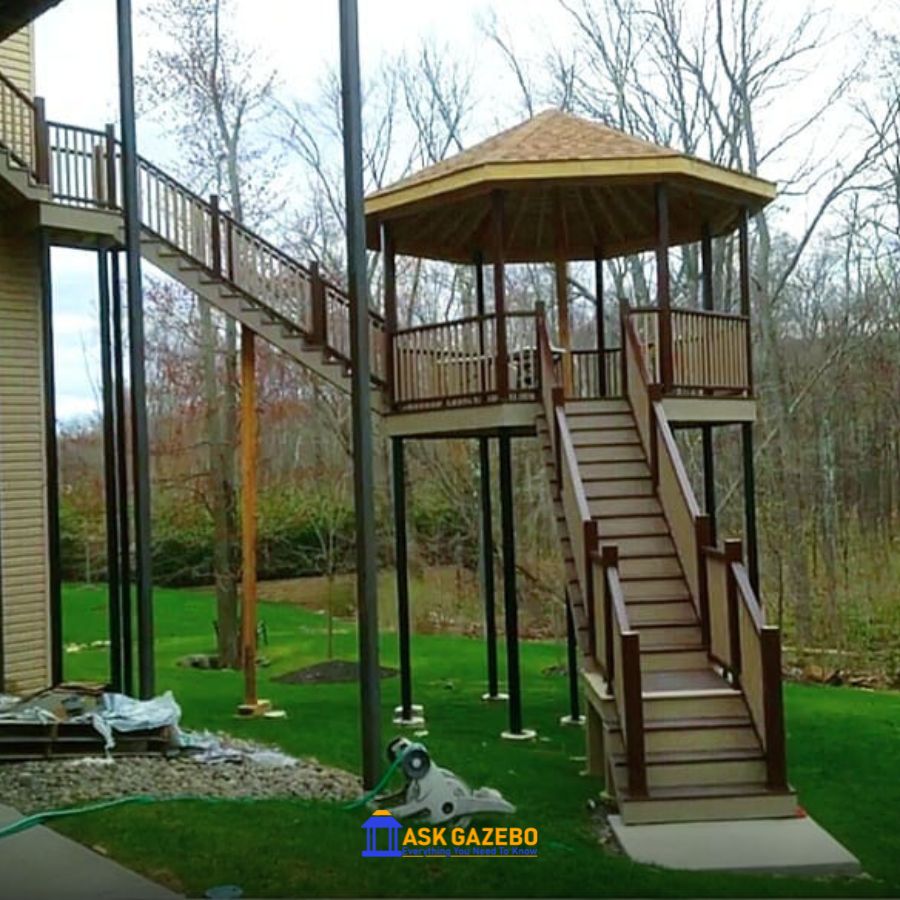



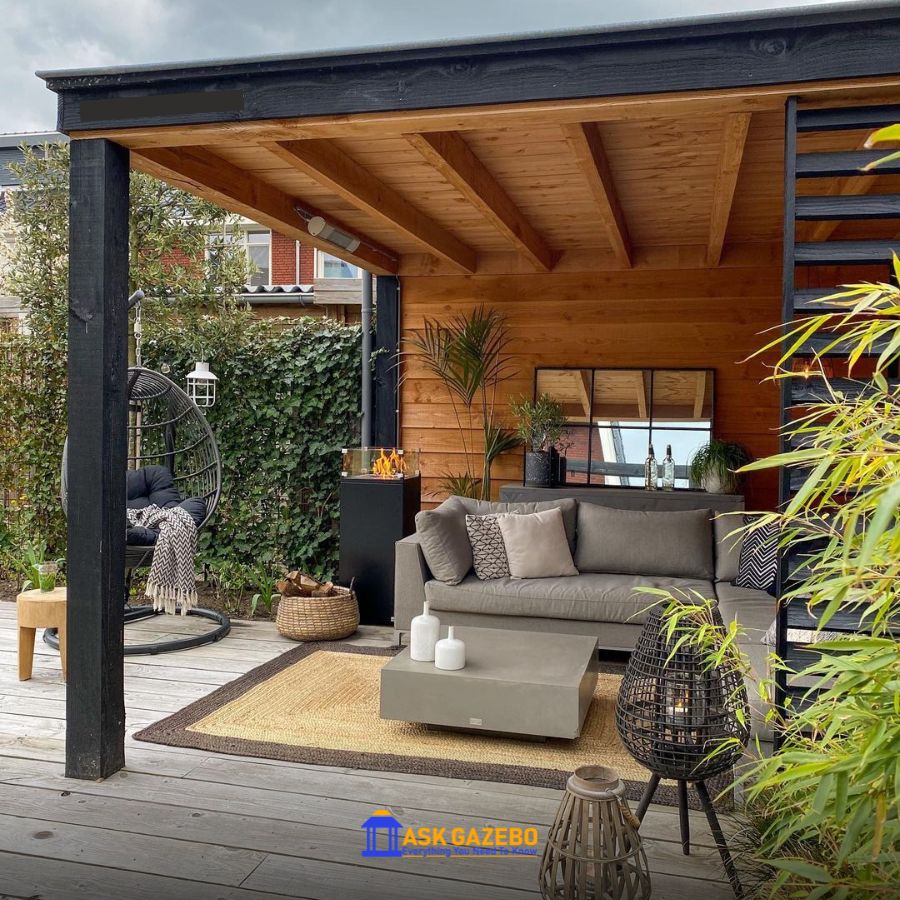

How to keep a gazebo on a raised deck in good shape?
A gazebo on a raised deck needs to be taken care of regularly to stay stable and last a long time. Here are some ways to protect your gazebo from the weather and keep it in good shape.
- Clean the gazebo regularly to eliminate dust, dirt, and spider webs. Mix a small amount of mild soap with water to clean the gazebo.
- Please don’t use harsh chemicals or rough cleaning products on the gazebo because they can damage it.
- Check the gazebo often for signs of damage or wear and tear.
- Fix any screws, bolts, or brackets that are loose right away to stop more damage.
- Replace any broken or worn parts, like the roof or the beams, to ensure the gazebo stays stable.
- Cover the gazebo when the weather is bad, like when there are strong winds, heavy rain, or snow.
- Use pest control products to keep insects and rodents out of the gazebo.
- Keep the gazebo and the area around it clean and tidy to keep pests from moving in.
Using these tips, you can ensure that your gazebo is stable, will last a long time, and can enjoy a beautiful and useful outdoor living space for many years.
FAQs
Is it safe to put a gazebo on a deck that is raised?
Yes, you can put a gazebo on a raised deck if the deck is strong and has the right support. The gazebo should be firmly attached to the deck with screws or brackets, and you should often check for signs of wear and tear.
Can you use a gazebo on a raised deck all year?
Yes, you can use a gazebo on a raised deck all year, but it might need extra protection in bad weather like strong winds, heavy rain, and snow. A cover that can withstand the weather can help protect the gazebo from the elements and make it last longer.
How should a gazebo on a raised deck be cleaned?
A mild soap and water solution is the best way to clean a gazebo on a raised deck. Don’t use harsh chemicals or rough cleaning products on the gazebo because they can damage it. It needs to be cleaned regularly to keep its look and stop dirt and other things from piling up.
How can I keep pests out of my gazebo on a raised deck?
Pests like bugs and rodents might try to get into your gazebo on a raised deck. Keeping the gazebo and the surrounding area is the key here. You can also stop pests from coming by using pest control products.
Can you put a gazebo on a deck?
Yes, you can build a gazebo on a deck, though it is important to take certain precautions. For example, ensure your deck can bear the gazebo’s weight and hold it up strongly.
If you have a concrete deck, it most probably can bear the gazebo’s weight. But, if you have a wooden deck, do thorough testing and inspection before installing a gazebo over it.
In a nutshell – can you put a gazebo on a raised deck?
Yes, you can place a gazebo on a raised deck, but keep a few factors like stability, design, and aesthetics in mind.
We recommend hiring a professional gazebo builder to ensure the stability of your gazebo over the raised deck.
If you still have questions, do not hesitate to ask in the comment section.








